The Myth of the Template Store
Editor’s Note: Andrew Price has been a regular contributor to Strong Towns since 2013 and is a founding member of the organization. This article first appeared on his blog and is republished here by permission. Unless otherwise noted, images are courtesy of the author.
When I lived in Arkansas, I met passionate urbanists in positions of power who would often travel to places such as Mexico and report on how great the cities were there.
A street scene in Mexico City.
We would talk about the Spanish colonial cities and their mixture of uses, their narrow streets, and their traditional architecture.
Another street scene in Mexico City.
It would frustrate me because we could identify the elements of what makes a city great…but then we would approve a drive-through bank.
A bank that was constructed around 2014.
We would zone the land "suburban commercial." The same people who would tell me how great Guadalajara or Paris are, were the same people who would say it would never work here. ("Here" being Arkansas, where I lived at the time.) I knew the whole system of modern urban planning is broken—from the financing to the zoning to the overbuilt transportation system. I would ask a lot of questions: What if we just said no to the bank wanting to build the drive-through, or the pharmacy that wants to build its front door facing the parking lot instead of the street? The answer was often that this was the company’s standard template, and we wanted to make potential sites as attractive as possible, because we could never get these companies to diverge from their template, and we would miss out on the jobs and investments that attracting yet another chain store to town would provide.
A McDonald's store built to their standard template with a drive-through and parking lot. Image source.
This sort of thinking is wrong on two levels.
First, let's talk about the template. I will showcase McDonald's here, because it is the stereotypical fast food chain, found in just about all but the smallest of American towns. There is a belief among some in the urban planning and development field that McDonald's has a template; you cannot get McDonald's to open a location that is not a quarter of an acre, with room for parking, a drive-through, and the famous golden arches.
But then you find these:
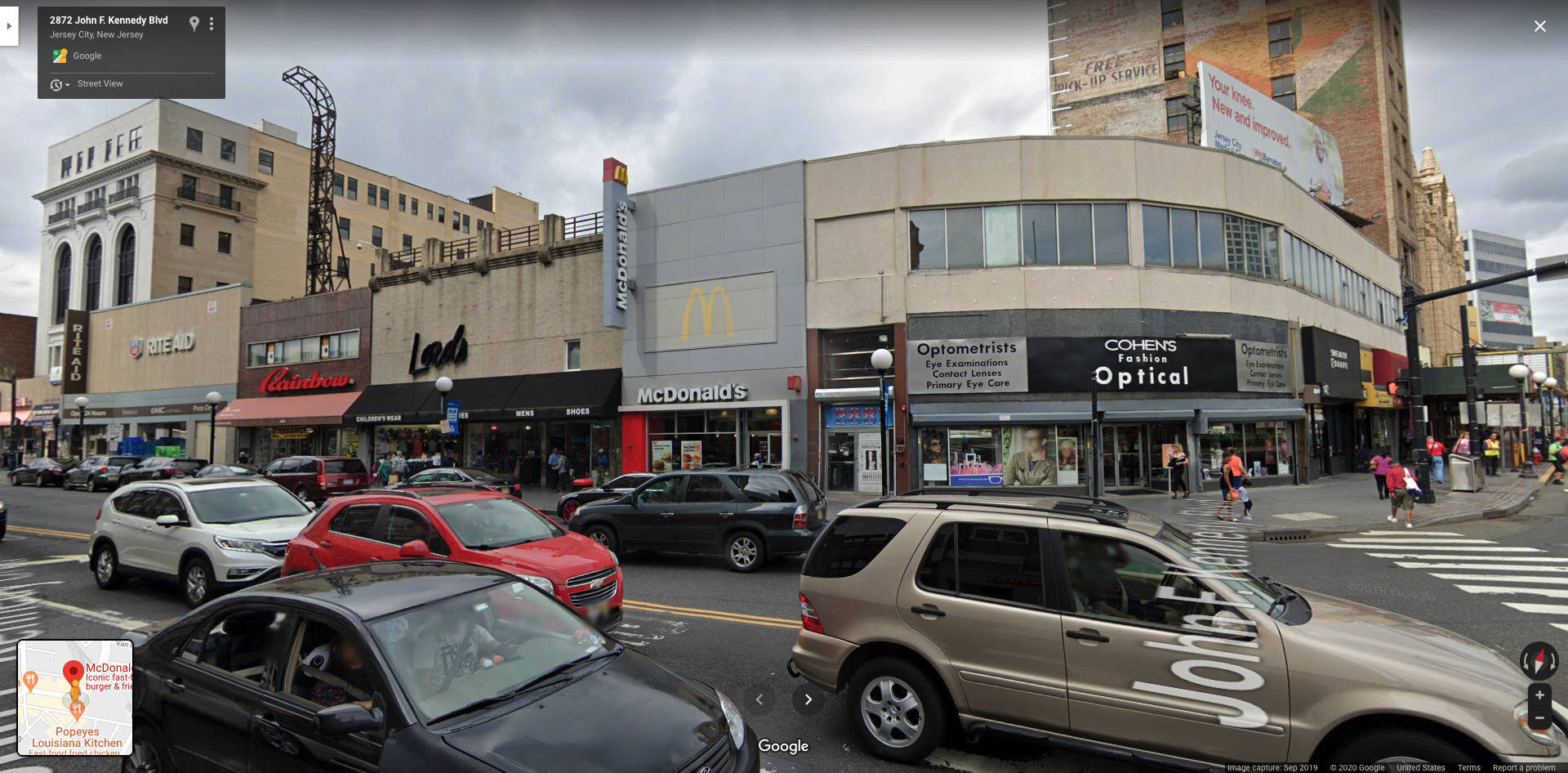
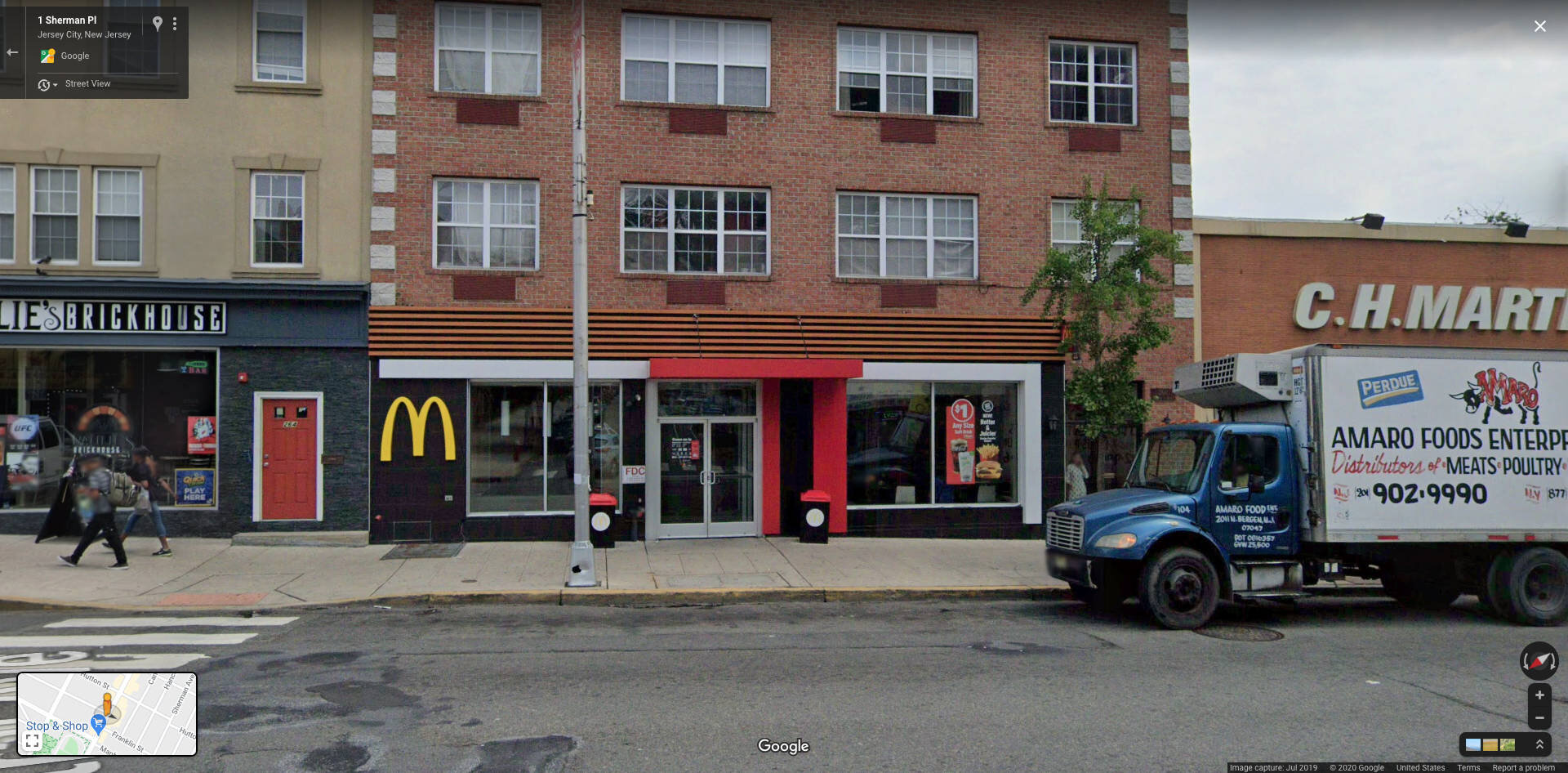
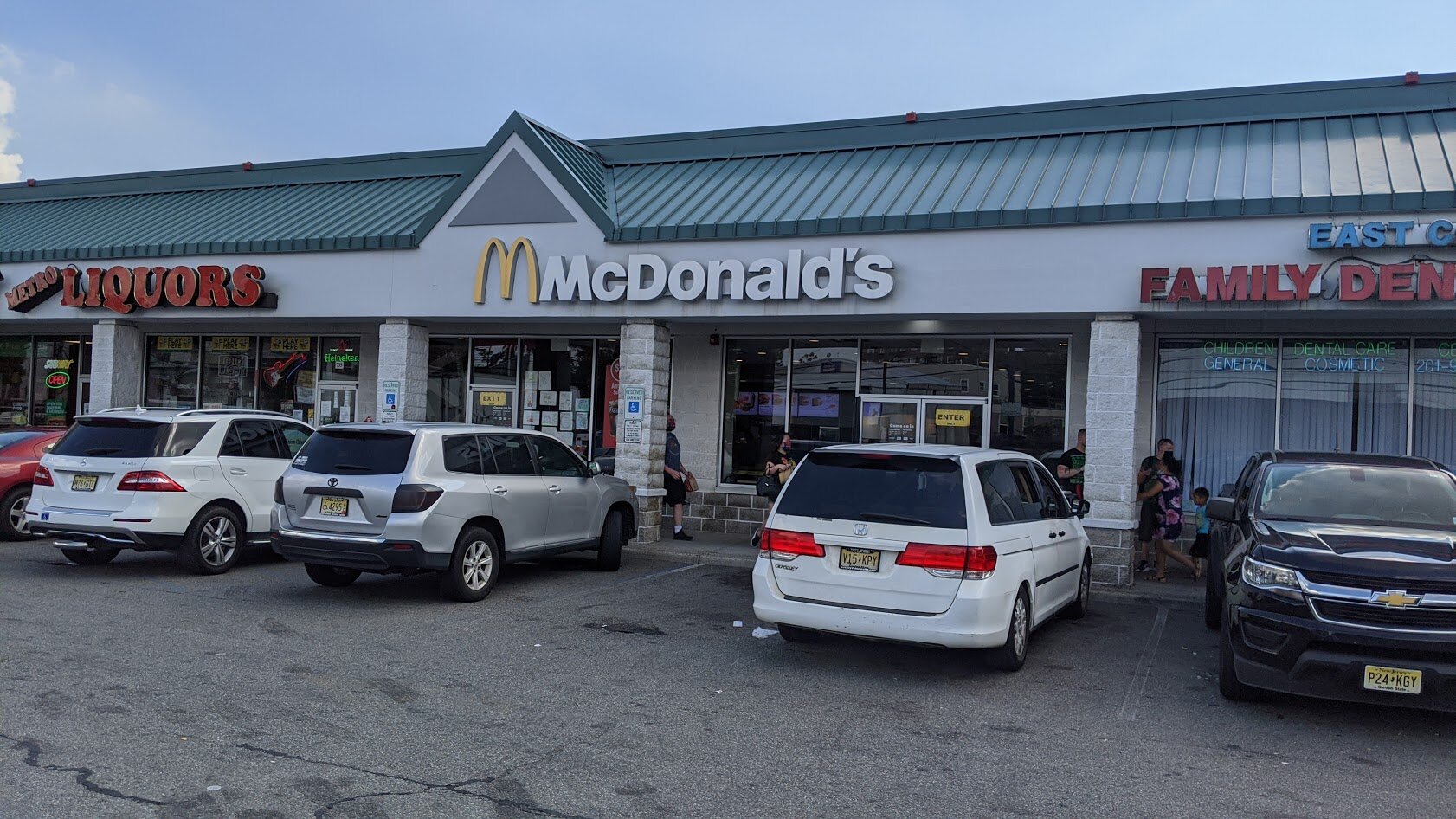
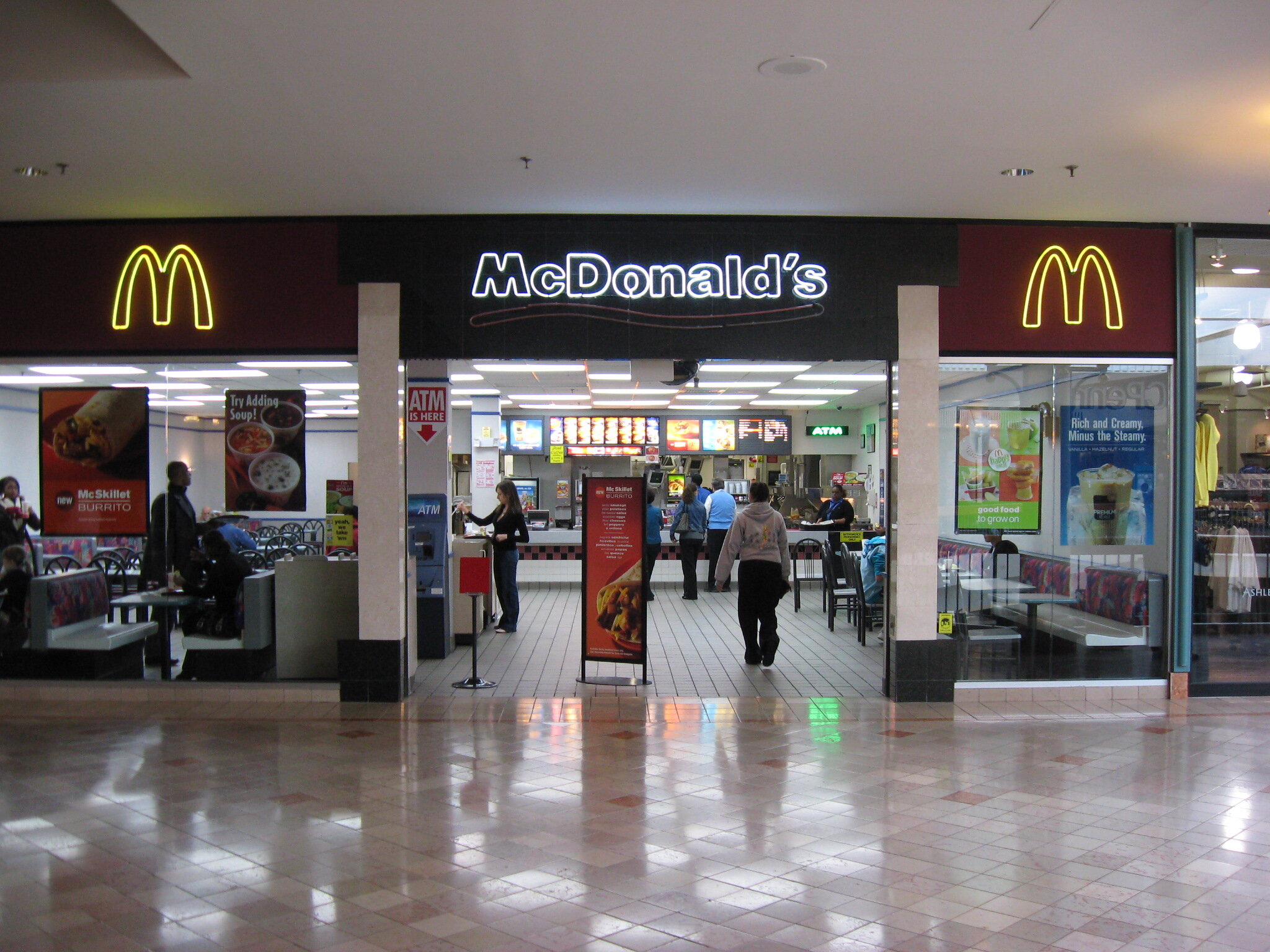
These are some examples from around my area in New Jersey, but I have seen McDonald's stores (and just about every other fast food franchise) in all shapes and sizes. It is a myth that popular franchises and chain stores will only build in their suburban template.
The second reason it is bad to make potential sites as attractive as possible to these major retailers is because you are selling your town out to the big corporations. Rather than assisting your own citizens in building wealth and incubating their own burger restaurant, you try to attract McDonald's, Burger King, or Wendy's by sending them the message, "You can paste your standard template here with minimal thought,” often throwing in a decade or more of tax breaks so your town grows for the sake of growth—which is the ideology of the cancer cell—and all so your town can gain a handful of barely-above minimum wage jobs rather than the next town over.
A highway of chains and franchises in Kingman, Arizona. Image source.
Chain stores build locations because they believe they will make a return, that they can pull more money out of the local community in profits than the amount of money they put into the community—no matter how much they “invest” in a brand-new building or how high their employees’ wages are. Because of the lack of local ownership (profits get sent elsewhere) you could call a chain store a liability, or "negative growth," in the sense that they slowly extract the net wealth from your community, even if they create individual wealth in the form of a few jobs. Franchises are a little better, but some percentage of sales or profit is usually sent back to the corporate headquarters.
We should not be begging businesses to move to our towns and cities. If we focus on making our towns great, we will attract people that want to live in them—then businesses will want to move to our town to tap into the consumer base or the labor pool. If a business believes they can make a profit there, they will find a way to make it work, even if it means breaking their standard template.
The future location of a Taco Bell opening in Hoboken, New Jersey. They cannot build their drive through, parking lot, or massive street sign at this location.
If a business refuses to break their standard template, you are better off without them. If we pursue a path of only attracting chain stores and franchises, we would end up with a world of copy-and-paste towns, distinguished only by their combination of retailers following their standard templates, without contributing anything to the uniqueness or livability of our cities.
A highway sign in Nebraska. The town's name is less important than your choice of which major fast food corporation you want to send your money to. Image source.
Instead of making it easy for an already profitable business to set up an outpost in your city, we should focus on making it easier for new businesses to grow from within. Streamline the permitting process and get the cost of entry as low as possible. It is important for cities to allow their residents to make something from nothing, and the jobs and wealth will grow from within.
Let your residents set up food carts (or better yet, the city could rent out food carts so there is no minimum investment.)
A taco cart in Union City, New Jersey.
I love street food. Street food tends to be the best food. Develop a street food scene in your town.
Interestingly, during the economic shutdown due to the COVID-19 pandemic, food carts in residential areas have been relatively unaffected because they never offered indoor dining in the first place. It is still business as usual for many of them.
Set up public markets where you allow your street vendors to cluster together, amplifying the foot traffic around each other.
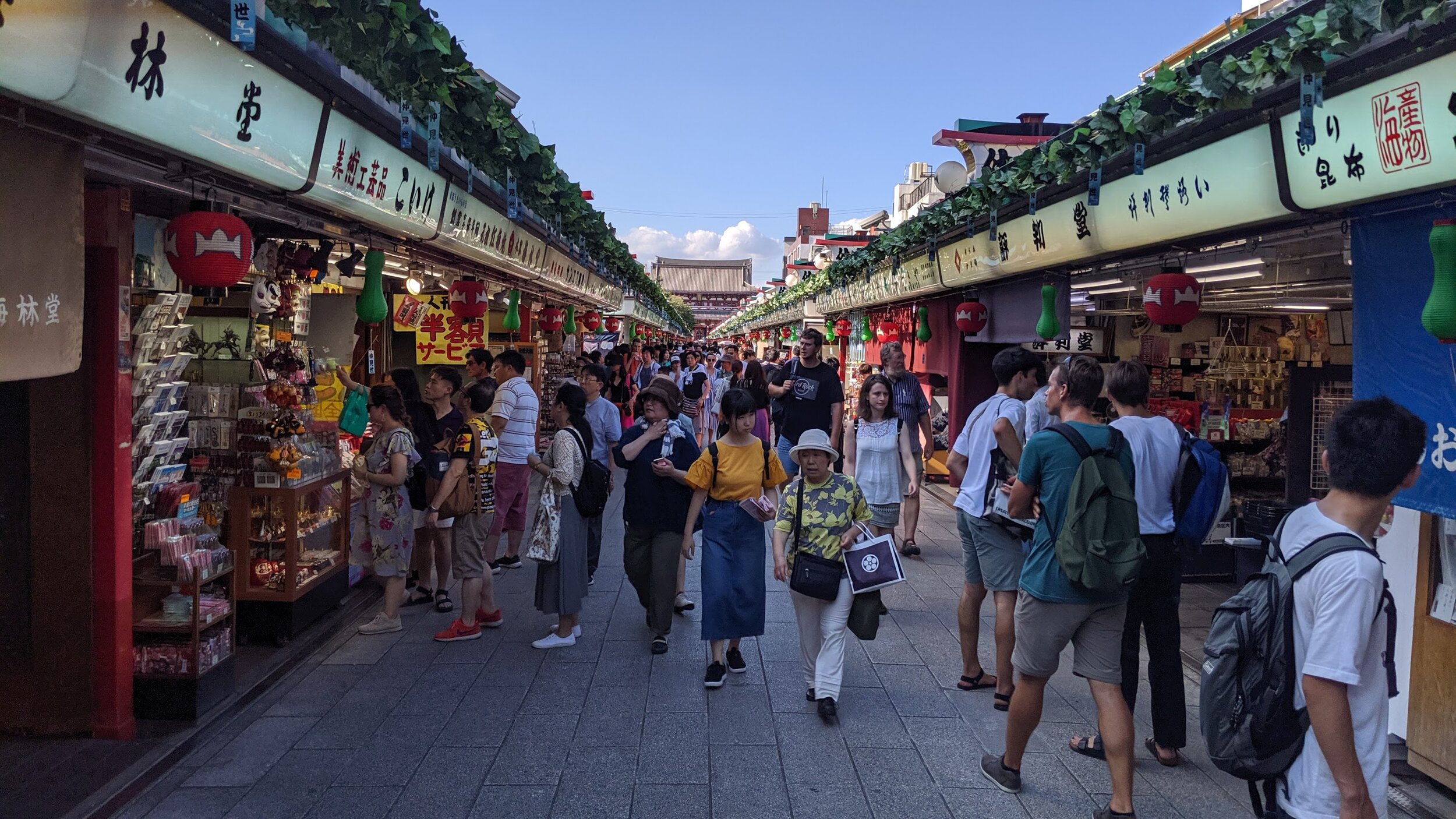
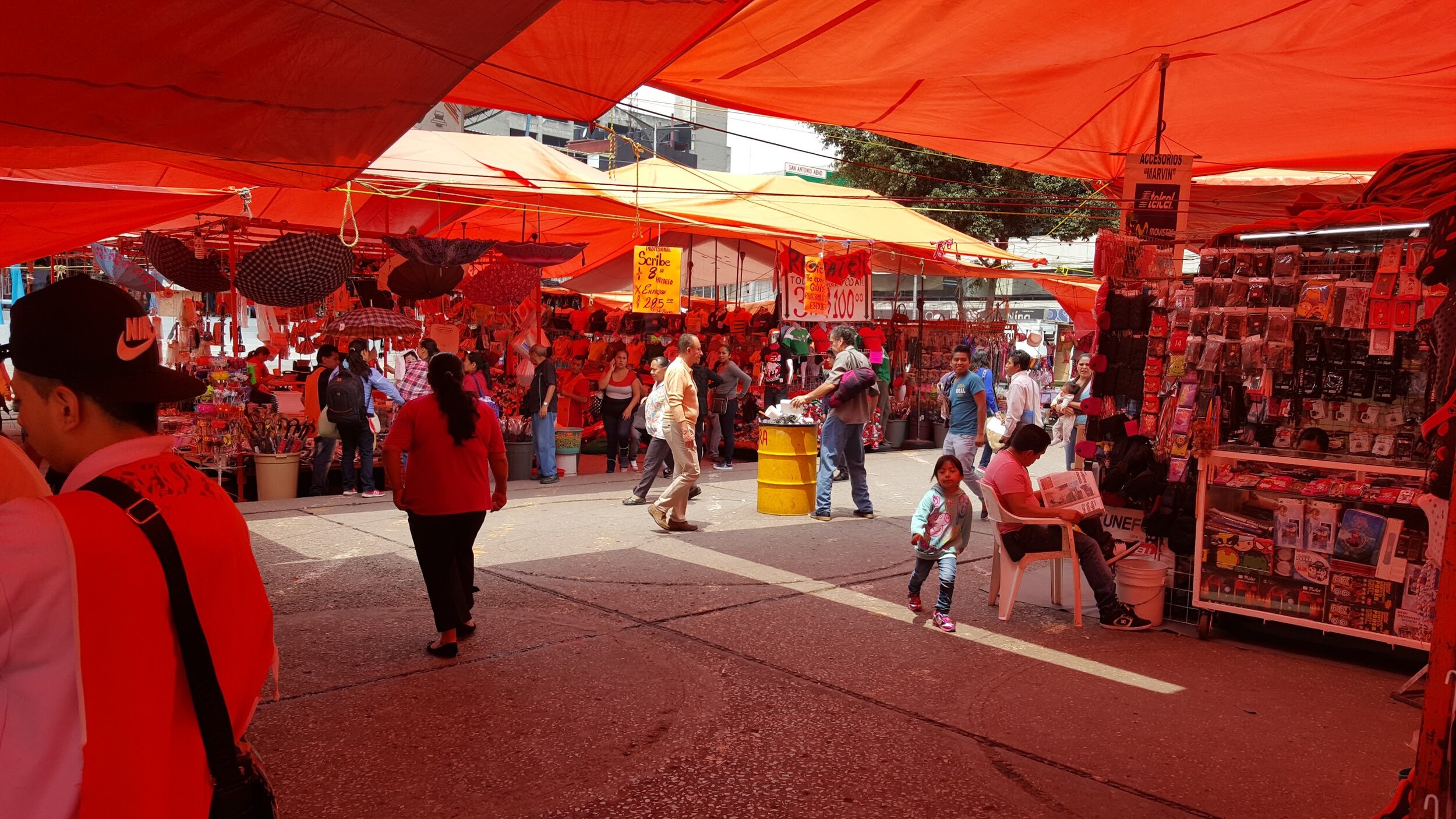
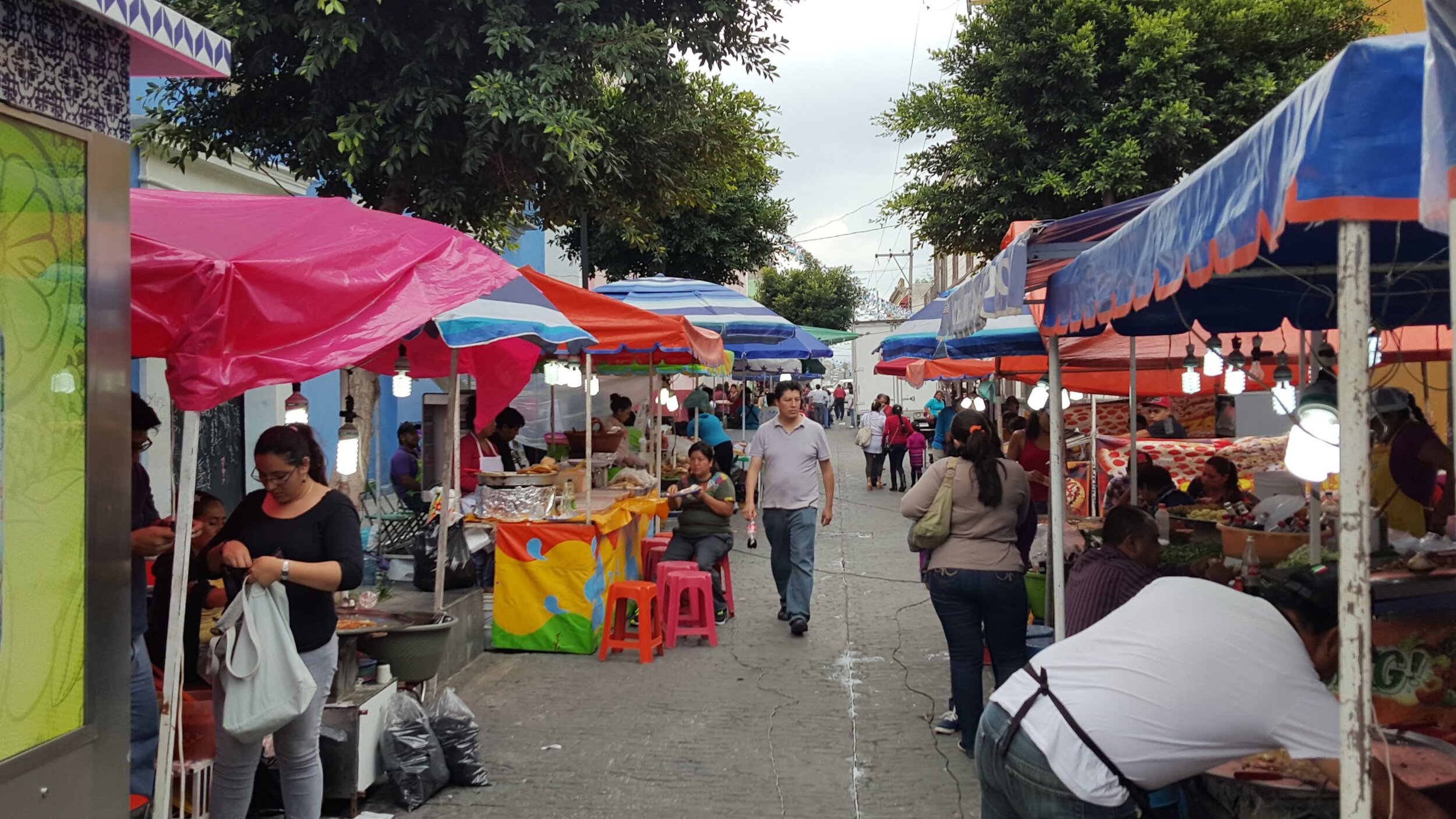

New York City has a program called Green Carts intended to allow street vendors to sell fresh fruit and vegetables in areas underserved by grocery stores. You do not need to subsidize street vendors. Let your street vendors sell fresh fruit and produce; they will locate to the areas underserved by grocery stores where demand is the highest, and you will have eliminated food deserts overnight.
Many homes in the United States have garages. Part of being able to start something from nothing is letting your residents utilize the property they already own.
A garage turned into a restaurant, in Jersey City.
We can take it one step further, and allow homeowners to convert part of their home to commercial space. Either to use it for themselves, or to rent out to another entrepreneurial resident to diversify their income.
Homes and small businesses mix well. Jersey City.
Conventional zoning would like us to segregate residential from retail, but having businesses intermixed with where people live is vital to creating complete neighborhoods where small businesses can thrive off the local foot traffic.
Residents of this quiet leafy street in Jersey City do not have to walk far for their shipping needs.
Our local pharmacy in Hoboken, operating since 1921.
Phooey to the chain store that will not touch your city if you will not let them build their suburban template. You are better off without them anyway.
A local ice-creamery in Hoboken that tastes better than anything you will find at Dairy Queen, Baskin-Robbins, or Ben & Jerry's. Find and cherish your local businesses.















